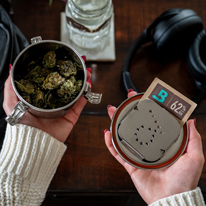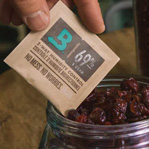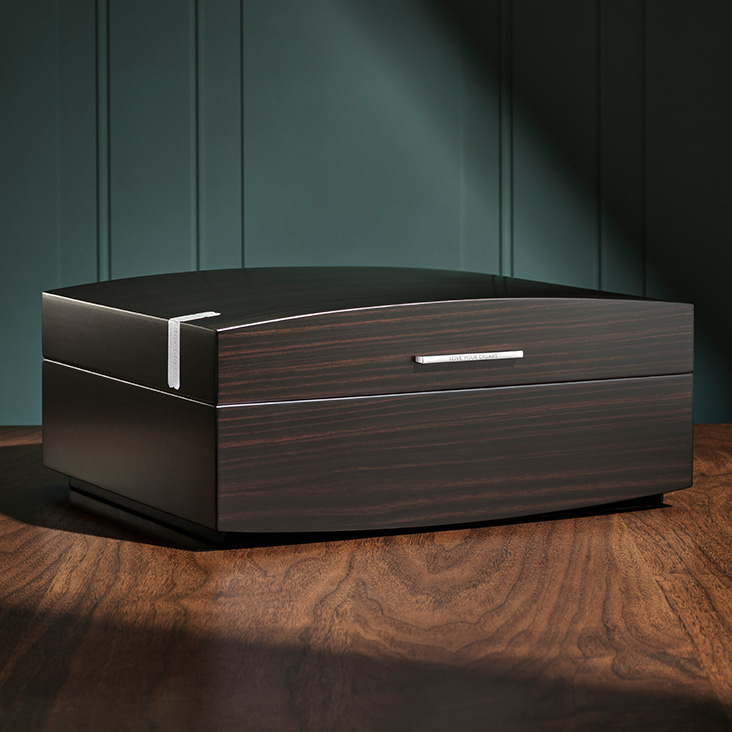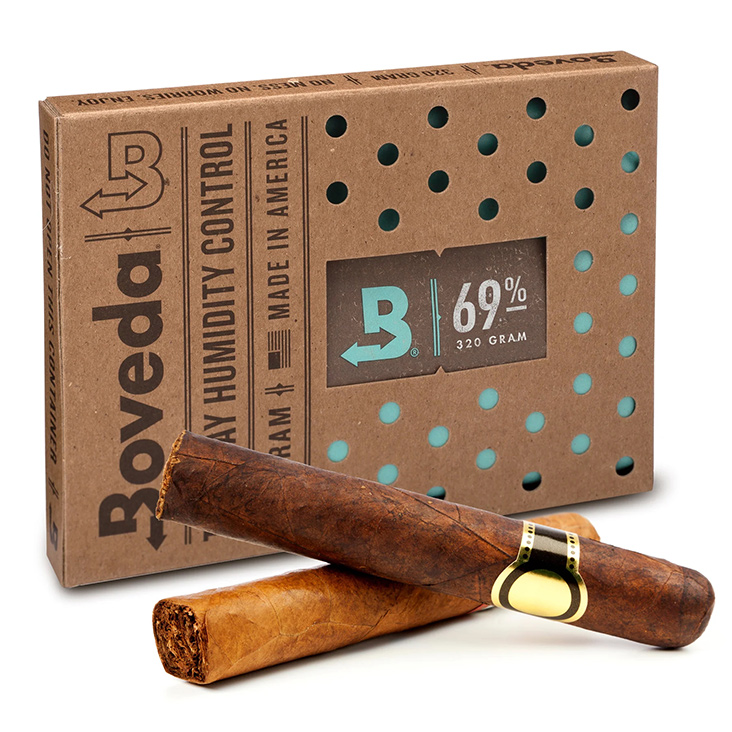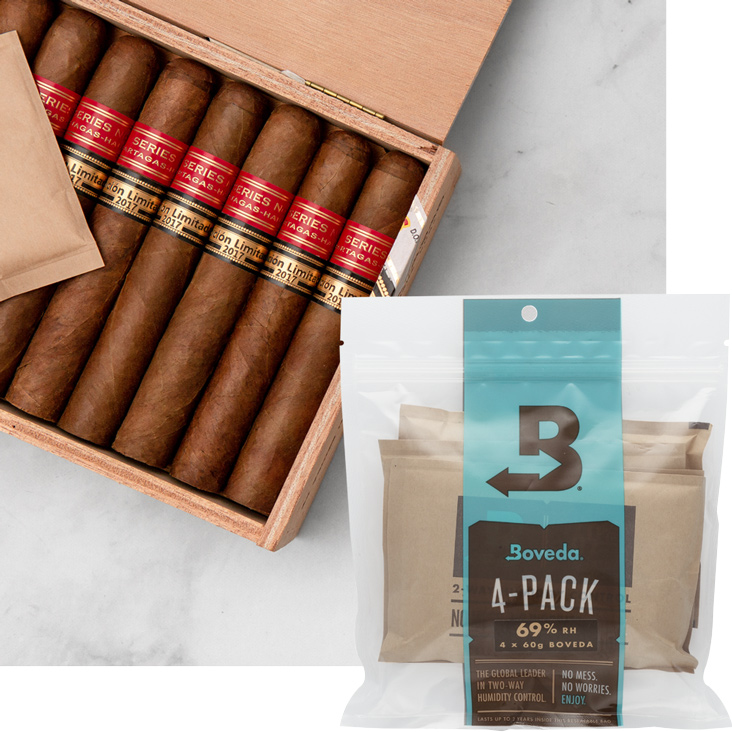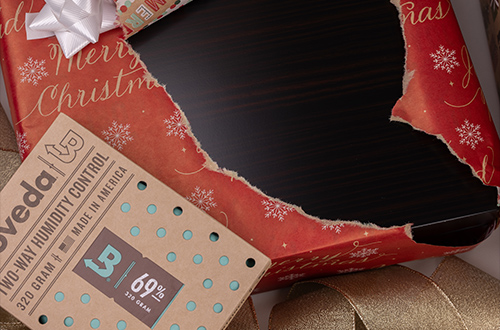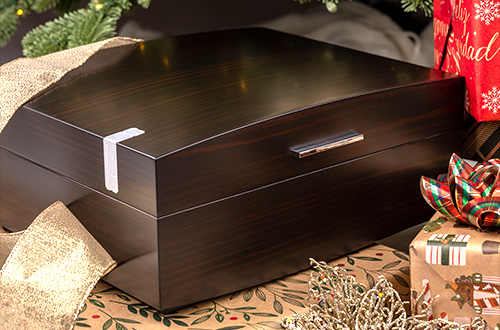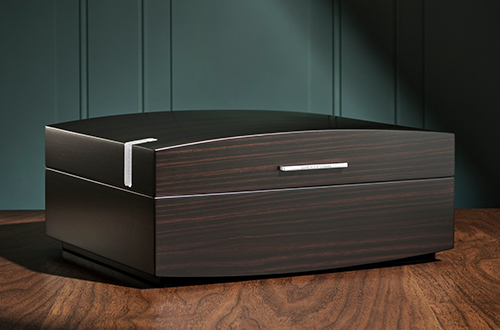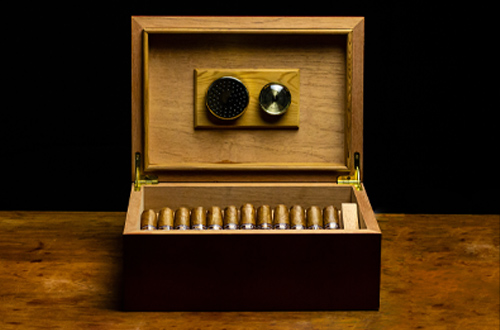
Cigar smoking is an age-old art form, enjoyed through the centuries by farmers and aristocrats alike. If you’re new to the experience, you might naturally feel intimidated; given its rich history, cigar smoking has its fair share of etiquette and best practices.
Smoking a premium cigar is about pleasure—a kind of ritualized enjoyment. It’s also about celebrating the craftsmanship that went into making that cigar: the careful growing, harvesting, packing, and rolling of the tobacco. Follow the straightforward steps below from Boveda, and don’t worry about mastering everything the first time you smoke a cigar. When in doubt, just take things slowly.
Choosing Your First Cigar
The first step in enjoying a premium cigar is selecting one that suits your tastes. Understandably, if this is your first time, you won’t necessarily have a frame of reference for what you enjoy. This is where a reputable tobacconist comes in handy.
The Flavors and Aromas YOu’re drawn to can help a tobacconist narrow down the cigars you’ll like.
– Read how to choose a cigar here.
Cigar shopping tip: You’ll get more one-on-one time with a shop’s tobacconist if you stop by during a non-peak time (i.e. NOT THE WEEKEND). So pay a mid-day visit to your local smoke shop Monday through Thursday. Then ask the tobacconist for recommendations on a nice beginner cigar: something high-quality enough to pique your interest.
In general, enthusiasts categorize types of cigars based on strength, shape, and size. Sizes vary according to length and ring gauge (width), and shapes fall into two subcategories, parejos (the classic, uniformly cylindrical shape) and figurados (creatively shaped cigars). Cigar strength can range from mild-to full-bodied, with several choices in between. The more full-bodied a cigar is, the stronger it is in both flavor and intensity.
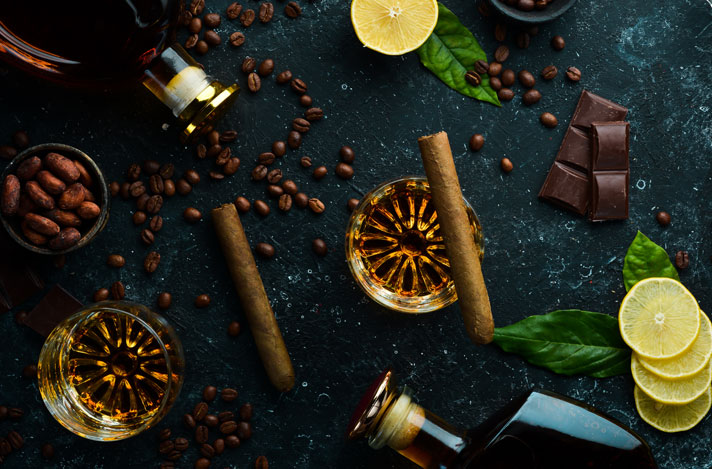
Cutting Your Cigar, the Right Way
Cigars come with a closed cap to prevent them from unraveling during transport. Before you smoke a cigar, you’ll need to carefully cut the cap so you can draw smoke.
While at the tobacconist, buy yourself a sharp, dedicated cigar cutter. Cutters come in three main types: guillotine (which slices off a thin layer of the cap); cigar punch (which bores a hole in the cap); and V-cutter (which cuts a wedge shape in the cigar). This Holt’s article offers a handy summary of your cigar cutter options.
If you’re using a guillotine or V-cutter, be careful not to take too much off. Position the cutter right where the cap and shoulder meet, hold the cigar at a 90-degree angle, and quickly, confidently apply pressure for a clean cut.
Watch How to Cut a Cigar
Find the cap of the cigar before you start cutting.
Lighting a Cigar: The Technique Behind the Flame
Okay, let’s add one more item to your basket at the tobacconists: a good lighter. Some aficionados swear by their cedar spills or matches, but most people like the relative ease of a butane torch lighter. Butane burns hot and clean, leaving behind no off flavors that compete with the cigar’s complexities.
The goal here is a slow, even light producing a sustainable ember. Hold the cigar at a 45-degree angle, just above the flame—not touching it—and slowly rotate it to toast the foot evenly. Once it’s evenly toasted, bring the cigar to your lips and puff gently while keeping the flame close. Continue rotating the cigar as you puff until it’s fully lit, but avoid drawing the flame directly into the cigar to preserve its flavor.
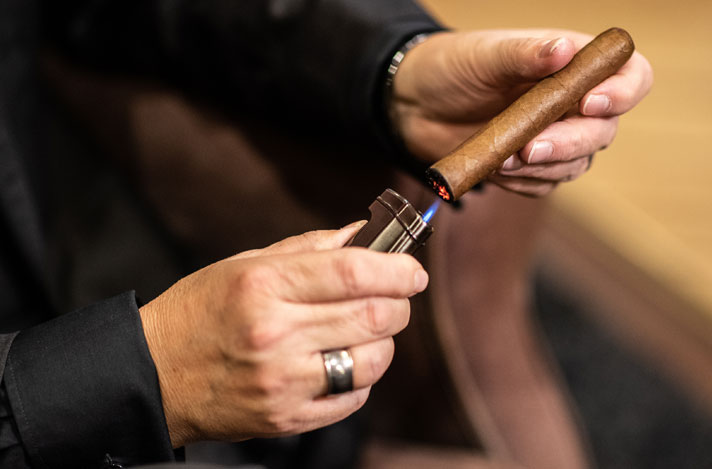
How to Properly Smoke a Cigar
You’ve reached the main event. The goal here is to savor this artisan product. Don’t rush the process.
To start, hold the cigar in a manner that fits its elegance. This resource on holding a cigar explores common techniques like the “pinch,” “the pen,” and “the flute.” Despite what some hardline cigar enthusiasts say, there’s no right way to hold a cigar.
PUFFING VERSUS INHALING
Next, understand the difference between puffing and inhaling. Puffing is when you draw smoke into your mouth, savor the symphony of flavors, and then release the smoke. Inhaling draws the smoke into your lungs, which you do not want to do with a cigar; cigar smoke is thick and strong, far too harsh for your lungs.
RETROHALING A CIGAR
If you really want to fully experience the nuances of a cigar, you can try retrohaling. Retrohaling a cigar is the process of exhaling cigar smoke through the nose, allowing the olfactory senses to pick up subtle flavors that aren’t as noticeable through the mouth alone. It enhances the overall tasting experience by engaging more of the senses, making it easier to appreciate the complexity of a cigar’s flavor profile. Retrohaling can overwhelm the sinuses, so be careful if you’re new to cigars.
MANAGING A CIGAR’S ASH
Once you’ve smoked enough of the stick, you’ll notice a measure of ash accumulating. A little ash is fine. It clings to the cigar. However, you don’t want the ash to grow so long that it can’t support its own weight and falls on your lap—or worse yet, the cigar lounge floor. Periodically ash your cigar in an ashtray with a gentle finger tap.
EXTINGUISHING A CIGAR
Lastly, let your cigar die with dignity. When you’re finished, resist the urge to stub the cigar in the ashtray. Smooshing a cigar kicks up all sorts of unwanted, unpleasant, and bitter aromas. Instead, put out a cigar by resting the unwanted remains on an ashtray groove, allowing it to extinguish naturally.
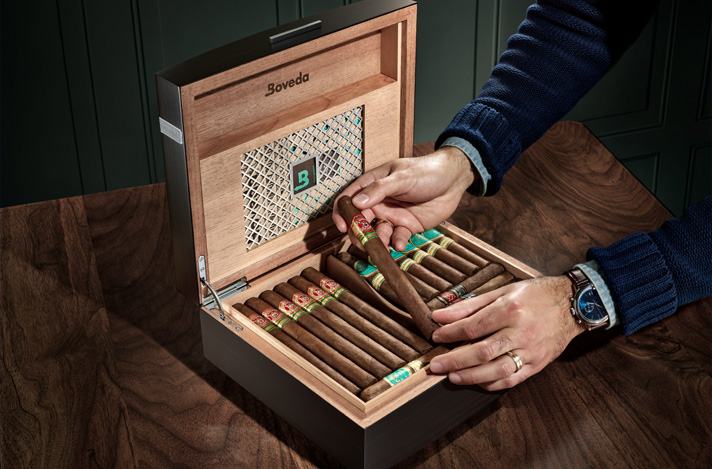
Storage: Keeping the Flavor Alive
Next step is to identify your personal cigar palate. When you shop for cigars, buy several of them to try out at your leisure. Compare different tobaccos, shapes, sizes, and strengths.
To preserve those cigars before you smoke them, you must store them properly. A great entry-level cigar storage option is a Boveda Humidor Bag, which comes preloaded with a Boveda packet. Boveda automatically maintains the ideal relative humidity (RH) to store cigars for everyday smoking.
You can also add your own Boveda packet to control humidity in a container with a good seal, like a new food storage container or quality Spanish cedar-lined humidor, like the Boveda Humidor. Wherever you store your sample smokes, Boveda is essential to protecting, preserving, and optimizing your enjoyment of each cigar.
Remember, cigar smoking is a continual process of experimentation. Sample many cigars, various cutting tools, holding postures, and lighting implements to find what’s comfortable for you. And understand that cigar smoking takes time to master. Enjoy the journey, and try not to think too much about the destination.


